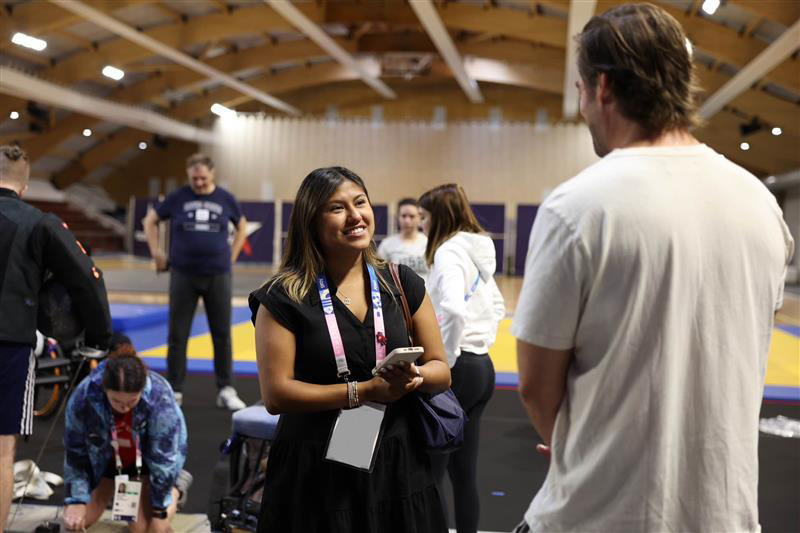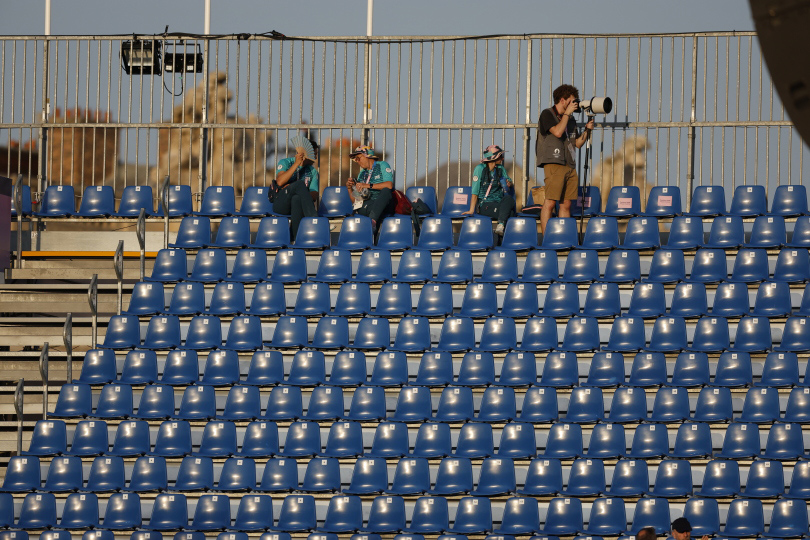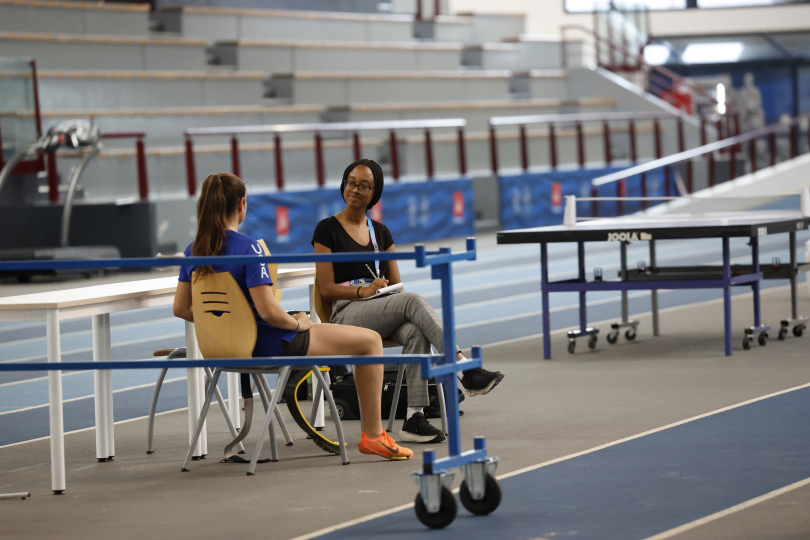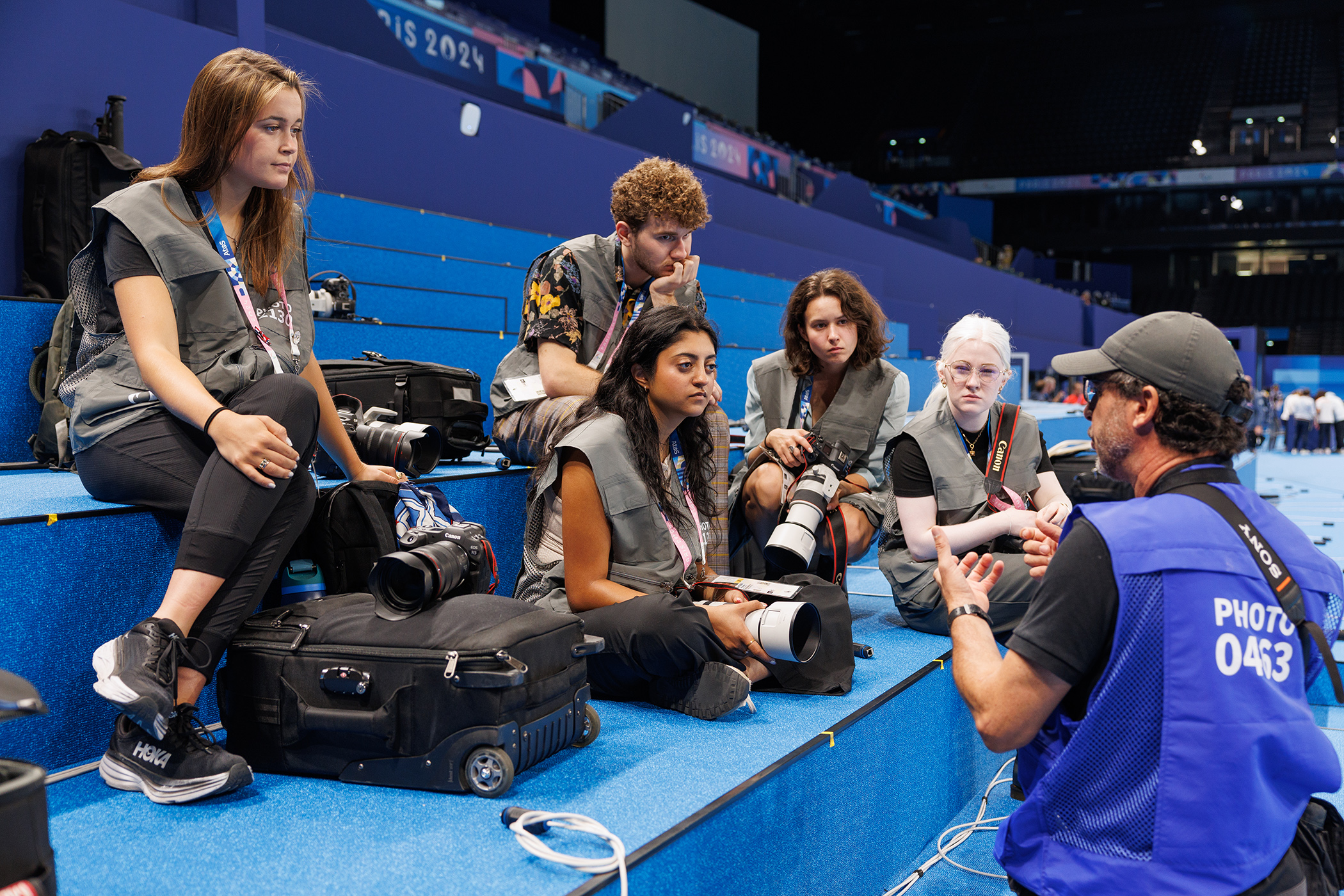A trip to Paris for many is a dream vacation. For a group of nine students and two professors from Grady College, their trip to Paris to cover the Paralympics was all about work experience.
“I love not sleeping,” said Ana Escamilla, only half-jokingly, of the 17-hour days she spent writing news and features about the Paralympic Games for the Associated Press. “I love just being able to work and produce and create all the time and being put in a high-pressure situation where you’re surrounded by your work. This experience definitely solidified that this is the kind of environment that I want to work in for my professional career.”
Escamilla was one of four writers and five photographers who spent six days reporting on the games. The AP published 20 written features and 175 photographs to a worldwide audience.
The professors who coordinated the trip and served as liaisons with the AP were Welch Suggs, associate director of the Carmical Sports Media Institute, who worked with the student writers, and Mark E. Johnson, principal lecturer, who worked with the photojournalists. Suggs and Johnson met daily with the AP to discuss coverage plans, then guided the students on editing copy and captioning photos, most of the time on a very tight turnaround.
“This is not about tourism or study abroad,” Suggs said of the experience. “This is about students who went to do a job, and they rose to the occasion and produced amazing stuff. It’s going to have a long-lasting impact on how the Paralympics are seen in this country.”
The Paralympics in Paris marked the third time AP has worked with Grady College students, including the 2016 Paralympics in Rio de Janeiro and the 2023 Women’s World Cup in Australia.

“Your contributions added depth and variety to AP’s text and photo coverage of the Paralympics,” said Karl Ritter, deputy global editor of international sports for the Associated Press, in a letter afterward to students. “To be honest, this collaboration exceeded my expectations, and I can only say ‘merci beaucoup’ to you and your supervisors for how seamlessly you integrated with AP workflows.”
Funding for the trip came from the college’s donors, including the John Huland Carmical Foundation in Atlanta and the Department of Journalism’s Carter Endowment for Journalism Excellence.
Paralympic preparation
The months leading up to the Paralympics were filled with honing skills and learning about the competition.
The students were selected following an assignment in November 2023 where they covered the Continental Athletic Conference soccer championships at Georgia Gwinnett College. Their work was evaluated by a panel of faculty and industry professionals who did not know the identities of the students submitting work.
The students selected for the experiential learning opportunity enrolled in Suggs’ summer course, Adaptive Sports in the Modern Media Landscape. During the class, students learned the history of the Paralympics, how to feature Paralympians and their elite athleticism, AP style as it relates to the Paralympics and main storylines for each sport. Students were assigned to create a knowledge base for each sport with rules and biographies about key athletes that were used as resources in Paris.
For Felix Scheyer, a third-year student majoring in journalism with a focus on photojournalism, the class helped put his interaction with the Paralympians into perspective.
“The class gave us a framework of talking with the athletes in ways that spark curiosity and taught us how to look at the Paralympics more holistically,” Scheyer said.

The team of writers including Escamilla, Julianna Russ, Jack Leo and Gabriella Etienne, also traveled in April to New York City to cover the Team USA Media Summit hosted by the United States Olympic and Paralympic Committee. During the event, the students met several Paralympians, attended panels about the competition and started writing features.
Several of the photojournalists including Samantha Hurley, Scheyer, Nathalee Simoneau and Avni Trivedi, traveled to Minneapolis over the summer to gain experience photographing water sports during the U.S. Paralympics Swimming Trials.
“Part of this trip to the trials was about exposing them to all of the variety of swimming in the Paralympics, because you have so many athletes with so many different abilities,” Johnson said. “Part of it was also for them to start to get to know some of the athletes and some of the coaches and trainers so that they could understand the deeper stories. They were there not to just make brilliant action photos of athletes and competition, but also to learn to look for the quieter moments away from the pool. It’s the quiet moments that show the teamwork, the connections … and those are the images that, to me, really help tell the story of Paralympics.”
The photojournalists, who also included Madeleine Mertens, had another barrier to prepare for: the fact that they were making pictures with borrowed cameras.
Canon generously leant the students top-of-the-line R3 cameras and lenses, including super telephoto lenses.
The students were able to practice with the cameras a week before travel, and spent time shadowing AP photographer Emilio Morenatti before the games began.
“Emilio was deeply connected to these games,” Scheyer said. “Our assignment for the day was yes, to take pictures, but mostly to watch how Emilio worked because he talked a lot about access and the ways that we get access. It was fascinating watching him work.
Support and confidence
Each day, the students were paired to travel together to the venues and cover their assignments. This collaboration fostered connections with one another.
“It was easy for us to collaborate,” Escamilla explained, “because everyone brought something different to the table from a work standpoint. From a personal standpoint, we would all get dinner at midnight together. After a long day, it was really good to hang out and have everyone share everything that they had going on during the day.”

Scheyer agreed: “Everyone worked their way there and earned their spot on the team, but it was it was incredible seeing the ways that we worked together and the ways that those golden shots became golden moments, that became golden opportunities for everybody on the trip to see the impact of the work that we were doing.”
For Gabriella Etienne, a political science and public relations student who is earning a Sports Media Certificate, this trip tied into her career aspirations of working in sports labor law, with a focus on women in minority protections.
“I feel like this was a really valuable space for me to be part of and I’m super grateful to be a part of it,” Etienne said. “This was a great opportunity for me to learn more about how minorities have been represented, or not represented, in sport because Paralympians are athletes who don’t get as much coverage, or maybe don’t have as much advocacy out there.
“I think being a part of this program is just a testament to the hard work that the Carmical Spots Media Institute does to support their students,” she continued. “I step back and tell myself, ‘Wow, this is an amazing thing that I got to do working for the Associated Press and having my byline on their page.’”
Scheyer also appreciated the connection and respect the professional photographers gave him.
“It was really beautiful to see how I was respected and how I was sort of just taken under the wings of all the other people,” Scheyer said. “I mean, it was amazing just being able to talk to these photographers.”
While each student had reflections of favorite stories written and moving pictures made, it was the stories of personal goals achieved that made the most impact.
“I think the biggest realization was that I was doing what I wanted to do and I was having fun, which was really impactful,” Scheyer concluded. “This has been a job, but I really had a blast in Paris. I would go home tired, but so happy that I would fall asleep smiling, and I wake up and do it again. And, I think that I felt like I belonged in a way that I haven’t before. I had been given the tools, and I was using them. I wasn’t scared to get the photo or step outside that box or talk to that person. Everything just clicked for us in Paris.”


